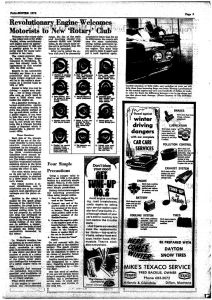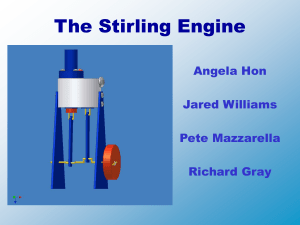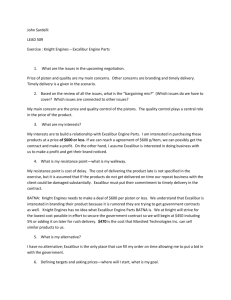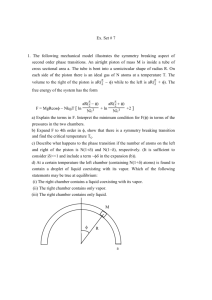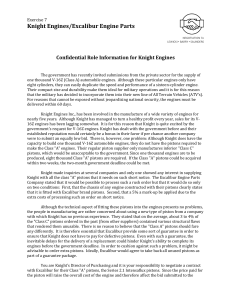Rotary revolution
advertisement
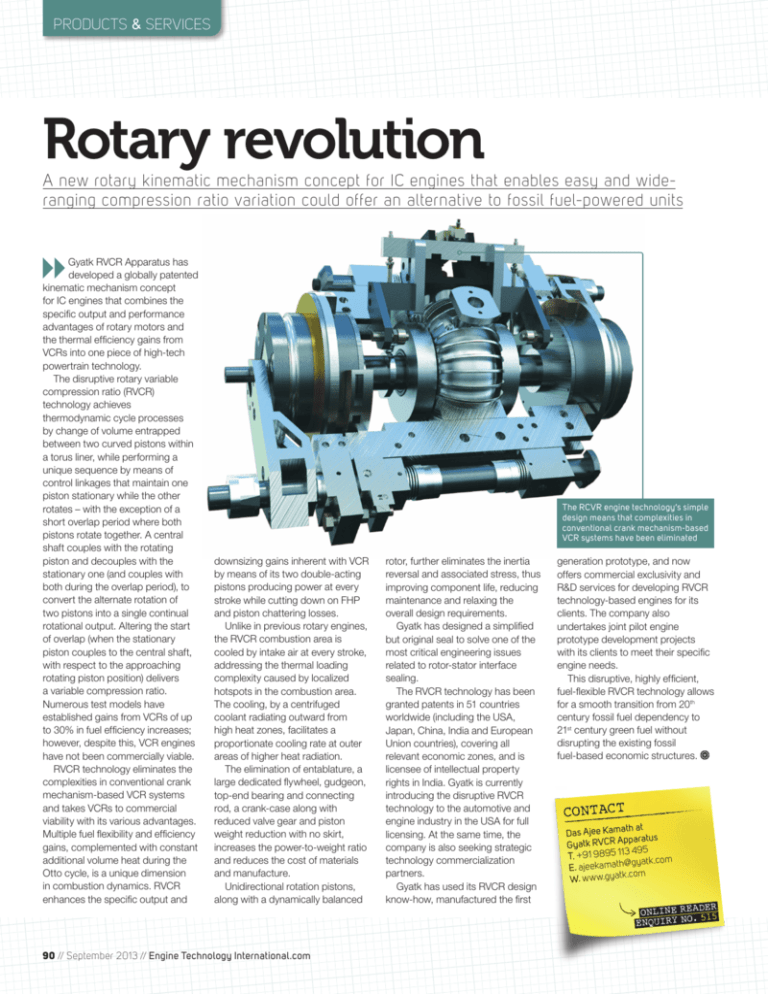
products & services Rotary revolution A new rotary kinematic mechanism concept for IC engines that enables easy and wideranging compression ratio variation could offer an alternative to fossil fuel-powered units Gyatk RVCR Apparatus has developed a globally patented kinematic mechanism concept for IC engines that combines the specific output and performance advantages of rotary motors and the thermal efficiency gains from VCRs into one piece of high-tech powertrain technology. The disruptive rotary variable compression ratio (RVCR) technology achieves thermodynamic cycle processes by change of volume entrapped between two curved pistons within a torus liner, while performing a unique sequence by means of control linkages that maintain one piston stationary while the other rotates – with the exception of a short overlap period where both pistons rotate together. A central shaft couples with the rotating piston and decouples with the stationary one (and couples with both during the overlap period), to convert the alternate rotation of two pistons into a single continual rotational output. Altering the start of overlap (when the stationary piston couples to the central shaft, with respect to the approaching rotating piston position) delivers a variable compression ratio. Numerous test models have established gains from VCRs of up to 30% in fuel efficiency increases; however, despite this, VCR engines have not been commercially viable. RVCR technology eliminates the complexities in conventional crank mechanism-based VCR systems and takes VCRs to commercial viability with its various advantages. Multiple fuel flexibility and efficiency gains, complemented with constant additional volume heat during the Otto cycle, is a unique dimension in combustion dynamics. RVCR enhances the specific output and The RCVR engine technology’s simple design means that complexities in conventional crank mechanism-based VCR systems have been eliminated downsizing gains inherent with VCR by means of its two double-acting pistons producing power at every stroke while cutting down on FHP and piston chattering losses. Unlike in previous rotary engines, the RVCR combustion area is cooled by intake air at every stroke, addressing the thermal loading complexity caused by localized hotspots in the combustion area. The cooling, by a centrifuged coolant radiating outward from high heat zones, facilitates a proportionate cooling rate at outer areas of higher heat radiation. The elimination of entablature, a large dedicated flywheel, gudgeon, top-end bearing and connecting rod, a crank-case along with reduced valve gear and piston weight reduction with no skirt, increases the power-to-weight ratio and reduces the cost of materials and manufacture. Unidirectional rotation pistons, along with a dynamically balanced rotor, further eliminates the inertia reversal and associated stress, thus improving component life, reducing maintenance and relaxing the overall design requirements. Gyatk has designed a simplified but original seal to solve one of the most critical engineering issues related to rotor-stator interface sealing. The RVCR technology has been granted patents in 51 countries worldwide (including the USA, Japan, China, India and European Union countries), covering all relevant economic zones, and is licensee of intellectual property rights in India. Gyatk is currently introducing the disruptive RVCR technology to the automotive and engine industry in the USA for full licensing. At the same time, the company is also seeking strategic technology commercialization partners. Gyatk has used its RVCR design know-how, manufactured the first generation prototype, and now offers commercial exclusivity and R&D services for developing RVCR technology-based engines for its clients. The company also undertakes joint pilot engine prototype development projects with its clients to meet their specific engine needs. This disruptive, highly efficient, fuel-flexible RVCR technology allows for a smooth transition from 20th century fossil fuel dependency to 21st century green fuel without disrupting the existing fossil fuel-based economic structures. ath at Das Ajee Kam paratus Ap CR Gyatk RV 495 113 T. +91 9895 gyatk.com E. ajeekamath@ om W. ww w.gyatk.c er Online read515 enquiry no. 90 // September 2013 // Engine Technology International.com



